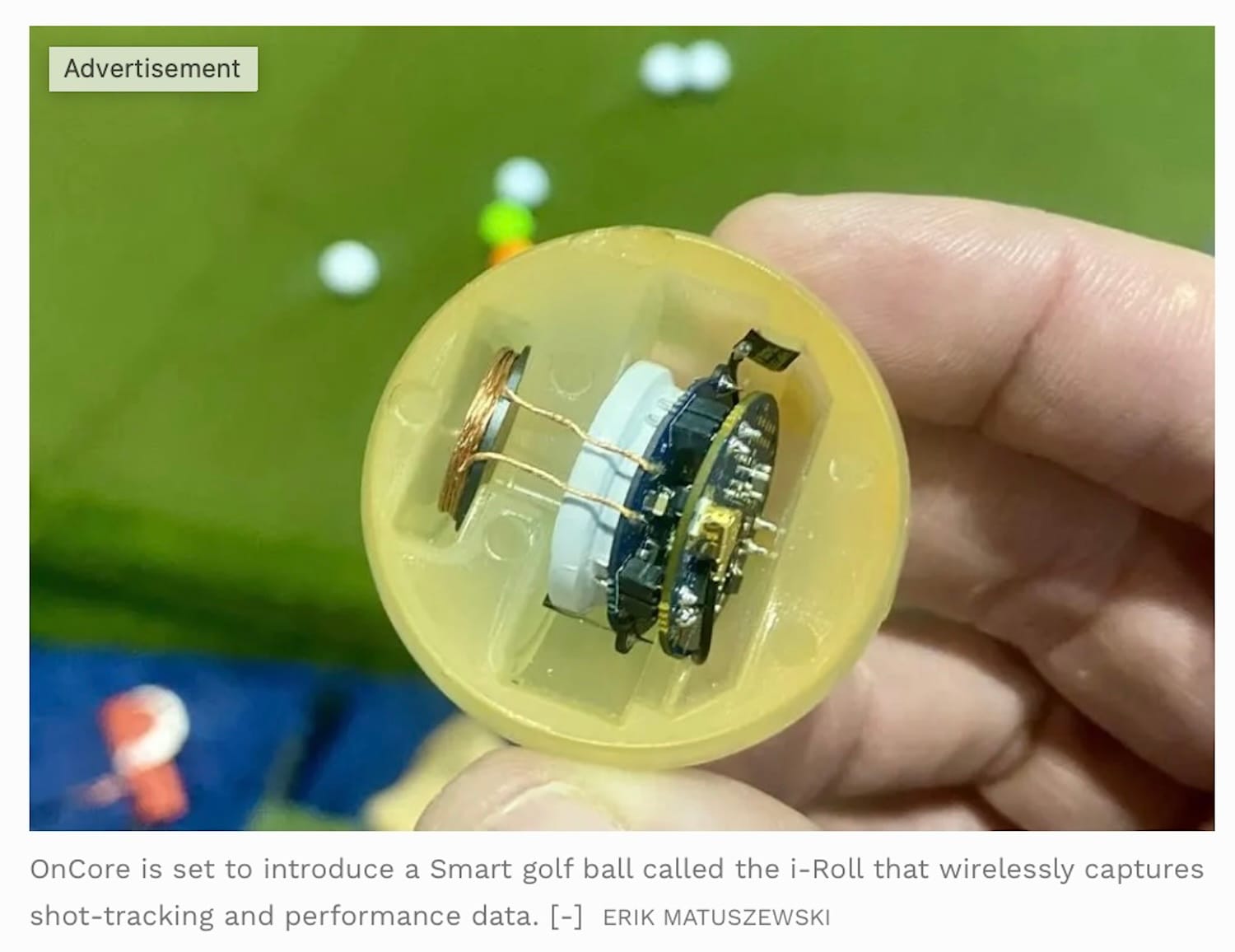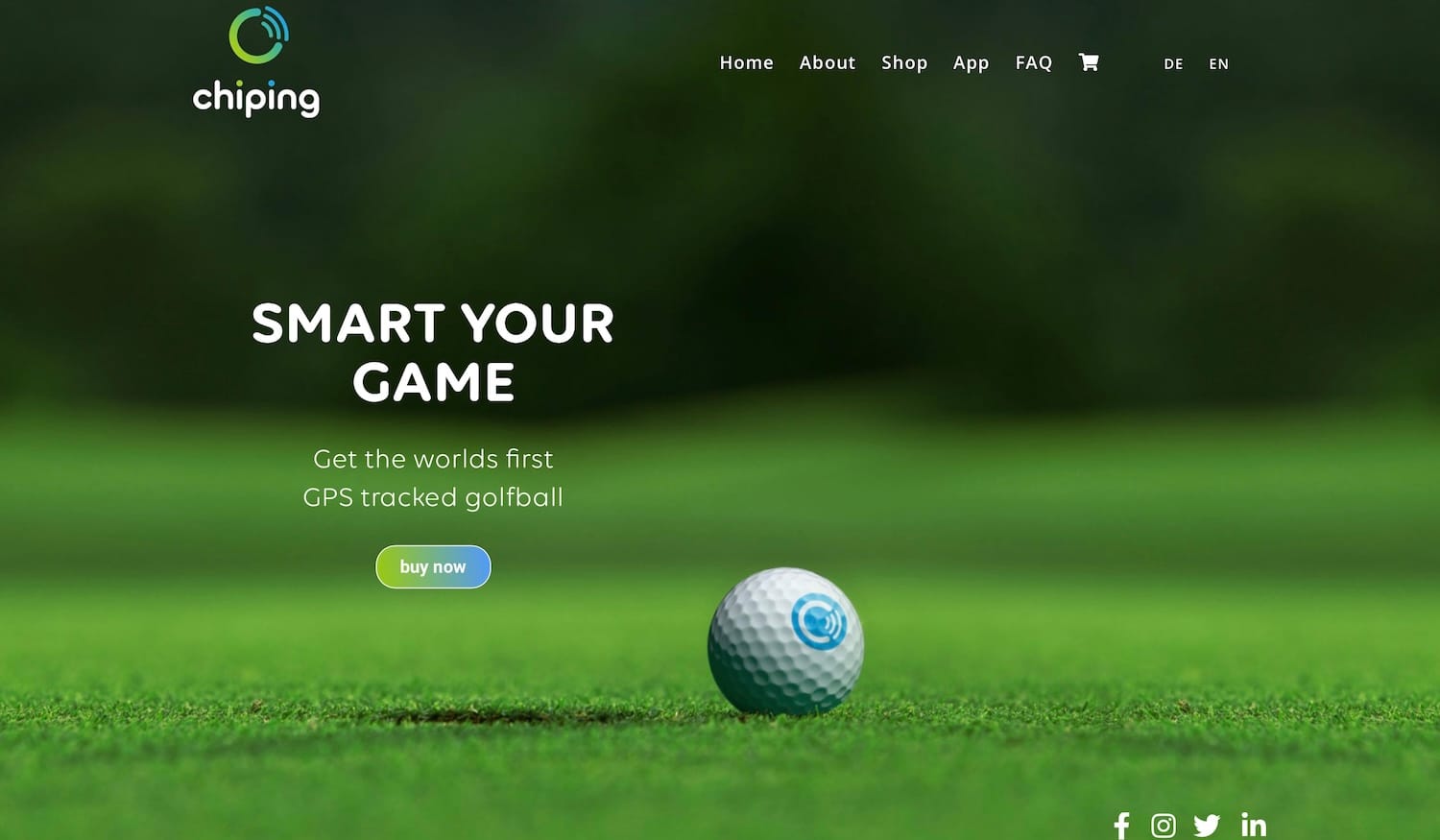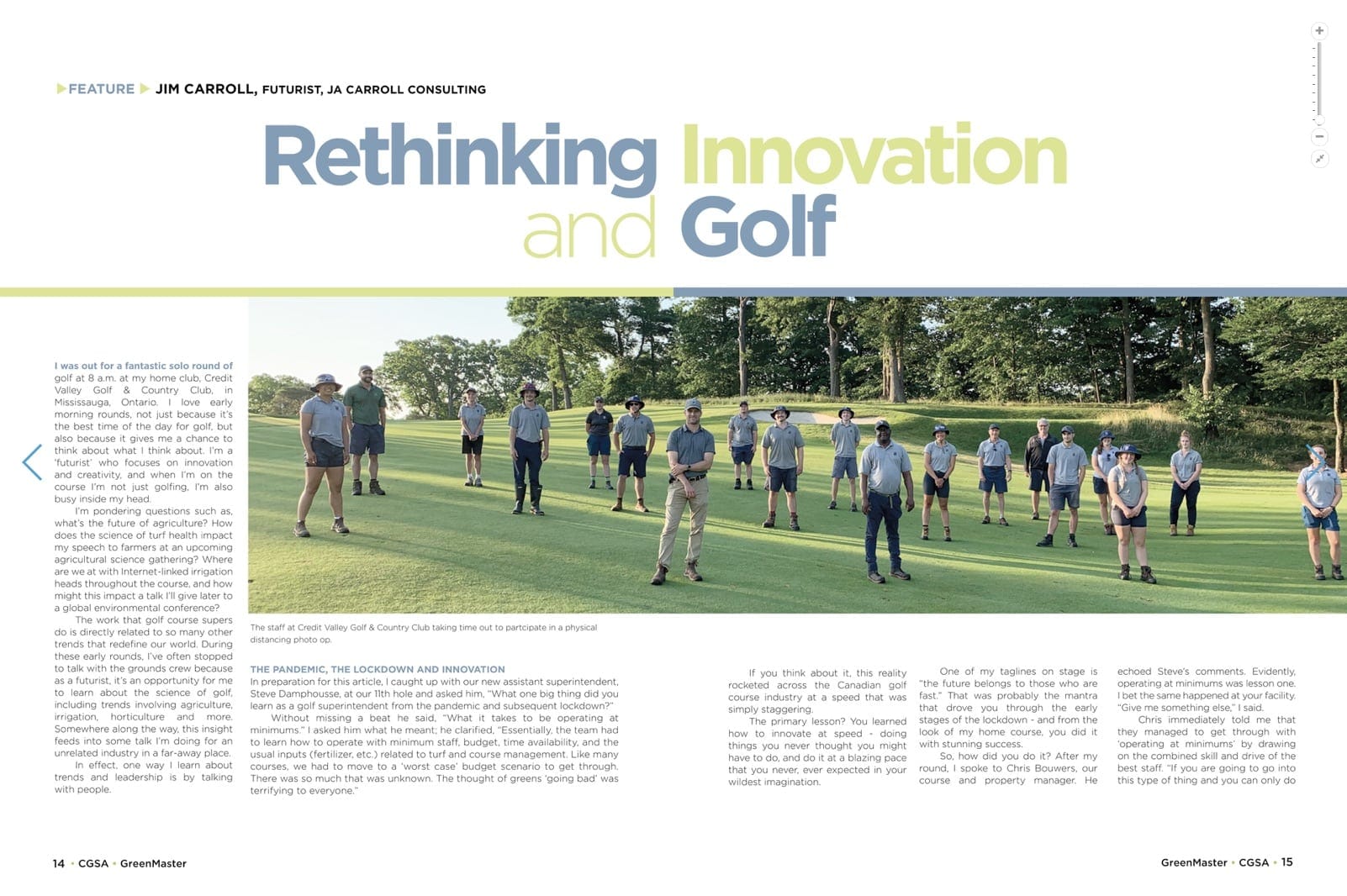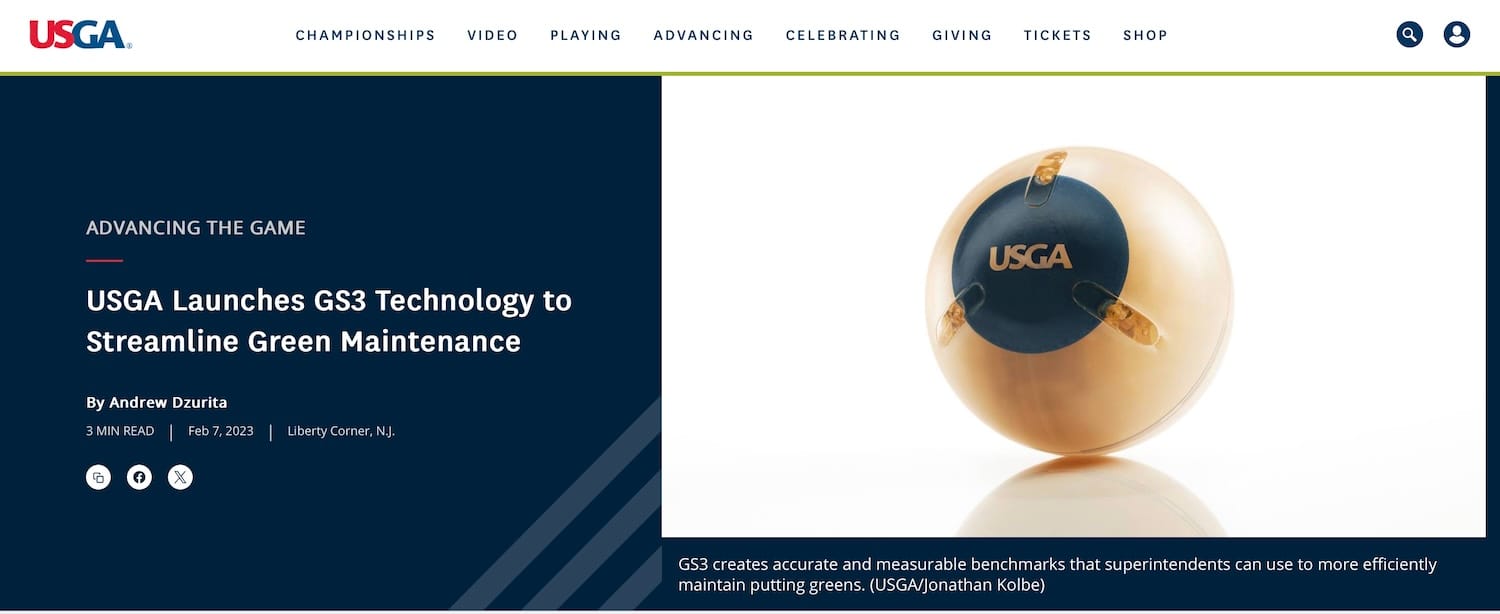"Chase bold goals: It’s not too late to try to invent the perfect GPS-based golf ball!" - Futurist Jim Carroll
I'm off to watch the Canadian Open today - it's just about a 45-minute drive from my home. One of the cool things is that one of the golfers in the tournament - a young fellow named Matthew Anderson - is from my original home club of Credit Valley. My son and I played with him a few times about ten years ago, and it's been pretty magical to watch him progress; he's now leading in PGA Tour Americas, which gives him a partial exemption on next year’s Korn Ferry Tour. What does all that mean? He might actually make it to the main PGA TOUR.
I tend to spend a lot of time talking and writing about golf. No wonder - I do a lot of it, and one of the highlights of my speaking career has been the times that the PGA of America has invited me in. Pretty cool stuff - check out https://jimcarroll.golf.

Back to the topic at hand - in between events, I'm getting quite a bit of golf in. The good news is that so far this season, I've only lost a few golf balls, which is indicative of how my game is progressing. The bad news? I keep thinking any time I lose golf about the fact that no one has yet invented the perfect GPS golf ball. We can put people on the moon, but we can't solve that challenge?
Anyone who has ever lost a golf ball - or two or three - or even two or three during a round -- will probably admit that they have always wondered one thing. Why can't someone invent a golf ball that has GPS capabilities built in? Why can't someone just come up with a system that lets you instantly find your ball using your smartphone?
It's not for lack of trying; for example, OnCore Golf announced some years ago that they were on track to build just such a device - but success is fleeting given the complexity of the task at hand.

But they are willing to admit the task is difficult:
Just over five years ago, OnCore Golf announced plans for its GENiUS Ball – a GPS-microchipped golf ball that that could capture shot-tracking and performance data, and transmit it to a mobile device in real time. While the GENiUS Ball remains in development, the Buffalo, New York-based, direct-to-consumer company has unveiled a first iteration: the i-Roll ball, which OnCore plans to bring to market this summer after successfully demonstrating the new technology at the PGA Show.
The i-Roll is designed for putting and wedge play — not full driver impact yet — and features embedded sensor, processor and communication technology that tracks performance data such as ball velocity, spin rate, spin axis, skid, and distance. That data can be sent wirelessly to an app on a user’s smartphone or other connected device via Bluetooth, and the i-Roll ball has wireless recharging capability so it can be used indefinitely.
OnCore Unveils ‘i-Roll’ Smart Golf Ball As First Step to It's Genius Golf Ball
Forbes, February 20,2023
Then there is the Chiping, but it is based on a different idea, using radio signals to help you locate the ball. It's almost there, but not quite perfect. Expensive, too!

Which brings me to the $4,000 golf ball. Yes, there is such a thing.
I was chatting at my home club, Cutten Fields, during my round yesterday at my home club, with our head groundskeeper Bill Green. Spend some time chatting with these folks, and you discover a lot about agricultural science, technology, innovation and creativity - they are masters of all four issues. You'll learn a lot about how the future is being implemented today. Indeed, I've written quite a few articles about this stuff - such as this piece about my adventurers into understanding this world a few years ago.

Bill was busy out on one of our newly rebuilt greens with a ball, testing it for firmness, roll and other factors, all of which are important to playability. (Our new greens rock!) And that's when he mentioned the GS3 golf ball, which clocks in at almost $4,000 Canadian. No, you don't play with it - someone like Bill would use it to do the work previously done through a careful eyeball process.
A rechargeable smart ball that is the same size and weight as a standard golf ball, GS3 creates accurate, measurable, first-of-their-kind agronomic benchmarks that superintendents can use to facilitate change more effectively on their course. The tool has sensors that collect over 15,000 data points, empowering analytics-driven decisions.

Packed with sensors and developed around an analytical analysis engine, the use of the ball in a carefully proscribed way gives someone like Bill the valuable information they need as to the state of their greens. Trust me, stuff like this is important for higher-end clubs - particularly those holding or seeking to hold major golf tournaments.


Bottom line? We don't yet live in the world of the true GPS-findable golf ball - but as with anything, there's a lot of technology rolling into these small little orbs - if you pardon my pun.
Often, innovation and the future are all about chasing bold goals, pursuing big visions, and deploying new ideas - and if you've always been wondering about the lost golf ball dilemma, now you know a little bit more about our tomorrow, today!
Futurist Jim Carroll marks his progress as a later-in-life golfer by the fact that he now has lost only 5 golf balls this season.

